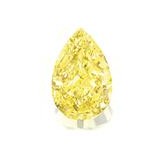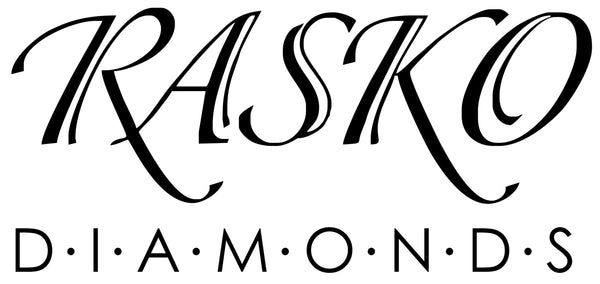About natural colored diamonds
What is a natural colored diamond anyway?
Natural colored diamonds are diamonds that have been naturally exposed to trace minerals and particulates during the crystallization process. This alters the chemical process of diamond creation and the result is an exceptionally rare and beautiful natural colored diamond.
Natural colored diamonds are extremely rare. Out of 10,000 carats of diamonds mined, only 1 carat will turn out to be natural coloured. Approximately 110 million carats of diamonds mined each year, with the Argyle mine in Australia mining 30 million carats. Only 2000 carats will be cut and polished colored diamonds.
Natural colored diamonds are becoming even more rare. There has not been a new colored mine open in over 20 years. The Argyle mine in Australia is expected to expire by 2018.
Primary colors of natural colored diamonds
Different trace minerals and particulates result in different hues, as well as different intensities of those hues. The rarer the color, the more valuable the diamond.
The rarest colored diamonds are red, blue and green. Only a handful of red diamonds have been mined. The blue diamond is the most unseen color in nature.
Natural yellow diamonds are the most common natural coloured diamond. A small amount of nitrogen is responsible for these stunning and warm diamonds.
 More unique then their clear diamond counterparts, intensely coloured true yellow diamonds, referred to as canary diamonds, are very desirable.
More unique then their clear diamond counterparts, intensely coloured true yellow diamonds, referred to as canary diamonds, are very desirable.The canary diamond, an excellent introduction into the world of natural colored diamonds, have recently been noticed at the center of many celebrity engagement rings.
In November, 2011, the "Sun-drop Diamond", a fancy vivid yellow pear-shaped diamond weighing 110.03 carats sold for almost $12.4 million at Sotheby’s Geneva.
Blue Diamonds
Natural blue diamonds are rare and very highly valued. Natural blue diamonds derive their colour or hue from the presence of the element boron.
 Blue Diamonds are connected with royalty and power, attracting the wealthy and powerful. Scarcity is also a driving factor in this high valued gem as there is an extremely short supply of natural blue diamonds entering the market each year. Less than a .01% of all graded natural coloured diamonds is blue.
Blue Diamonds are connected with royalty and power, attracting the wealthy and powerful. Scarcity is also a driving factor in this high valued gem as there is an extremely short supply of natural blue diamonds entering the market each year. Less than a .01% of all graded natural coloured diamonds is blue. Natural blue diamonds have set records at auction houses over the years. Most recently, the world's largest flawless 13.22 carat blue diamond was sold at Christie’s for $24.2 million, breaking records at $2 million per carat.
Pink Diamonds
Natural pink diamonds are among the most popular and most rare natural coloured diamond. Pink diamonds gain their beautiful colour as they make their way to the surface due to changes in their electron structure.
 Pink diamonds are associated with luxury, elegance and style. The anticipated scarcity has made pink diamonds even more valuable as supply begins to diminish.
Pink diamonds are associated with luxury, elegance and style. The anticipated scarcity has made pink diamonds even more valuable as supply begins to diminish.The Argyle mine currently produces over 90% of the world’s pink diamonds. They are expected to have completely depleted their supply of pink diamonds by 2018. To understand how truly rare these pink diamonds are, of every million carats of rough diamonds produced at the mine, only one carat is suitable for sale in one of Argyle mine’s annual tenders.
In 1642, the "Sea of Light / Darya-i-Nur" was discovered and became part of the crown jewels of India. This pink diamond, the largest in the world, is 175 carats.
Grading fancy colored diamonds
Although there is not necessarily a desired hue, there is a list of criteria that is desired in the colour including, a uniform colour tone throughout, even hue, all over purity and sparkle. The criteria when purchasing a natural coloured diamond is slightly different to colourless or white diamonds.
Color
In diamonds, rarity equals value. With diamonds in the normal range, value is based on the absence of color, because colorless diamonds are the rarest. With fancy color diamonds—the ones outside the normal color range—the rarest and most valuable colors are saturated pinks, blues, and greens. In all cases, even very slight color differences can have a big impact on value.
Cut
In coloured stones, the cut is incredibly important to enhance and have as even a coloured stone as possible while taking as little weight as possible of the raw stone. Size and shape are two aspects of cut that can influence diamond color. The larger a diamond is, or the deeper its pavilion, the farther light can travel in it. This can often lead to a richer, more intense color.
Carat
Like with colorless diamonds, large fancy color diamonds are rarer and more valuable than small ones.
Clarity
With fancy color diamonds, color is the dominant value factor. Even diamonds with numerous inclusions that result in a low clarity grade are prized by connoisseurs if they display attractive face-up color. Of course, inclusions that threaten the gem’s durability can lower a fancy color diamond’s value significantly. Fancy color diamonds can exhibit color graining, which is considered an inclusion.
